Hands on with Samsung’s 2018 TV tech: 8K AI QLED, MicroLED and Smart Sound
Samsung bucked the trend at CES 2018, talking more about its TV technologies than the TVs themselves.
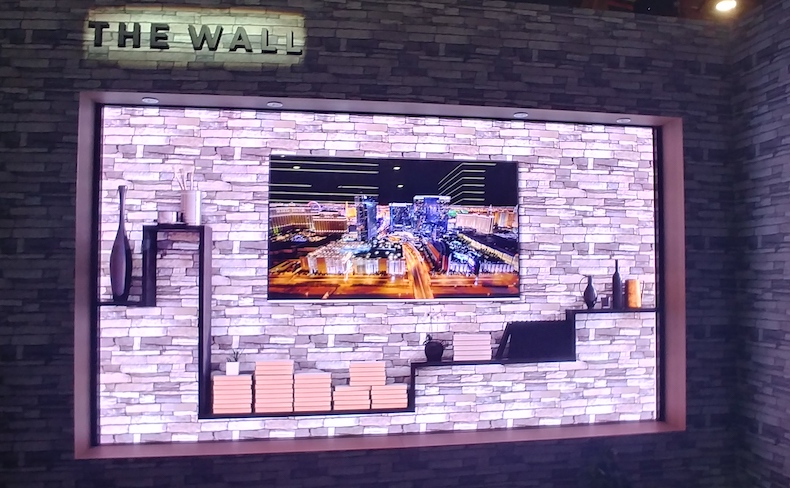
As CES is traditionally the annual stage on which the major TV brands unveil their coming TVs for the year, Samsung surprised everyone by going against the grain.
The Korean giant had other ideas, choosing to share the roadmap for its upcoming TV technologies – some of which are more imminent than others – rather than unveil specific 2018 TV models, as LG, Panasonic and Sony did.
Perhaps Samsung’s idiosyncrasy shouldn’t come as much of a shock. After all, while rivals were announcing their new OLEDs at last year’s CES, Samsung played maverick, introducing QLED (quantum dot light emitting diode), the Korean giant's new take on quantum dot technology.
We did the rounds with its 2017 QE55Q7F and QE65Q7F QLED TVs, and while they were generally impressive, they let themselves down by sacrificing black level performance for colour vibrancy, and concerning viewing angles.
As well as shining a light on future tech, Samsung is addressing such issues in its next generation of QLEDs. And here’s how…
2018 QLED TV range
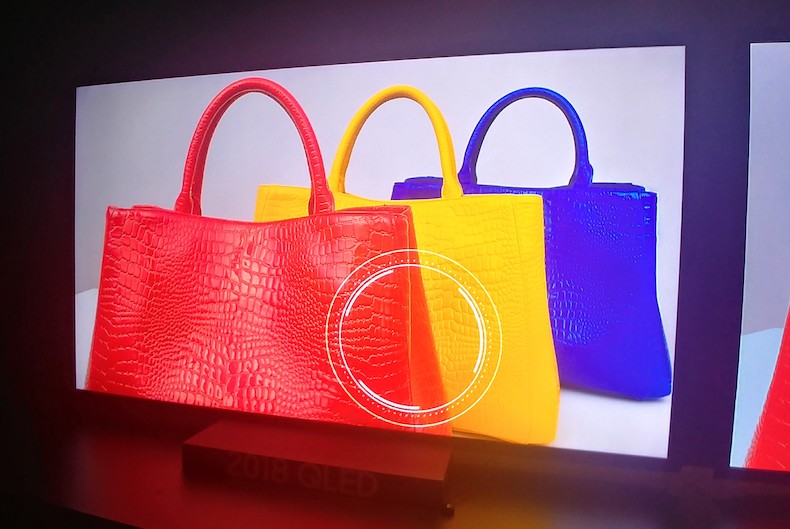
While still running with QLED technology, Samsung has gone back to the drawing board and made changes to pixel structure and optics for its 2018 TV range.
The aim: to minimize blooming and improve black detail, and peak brightness in small image details.
While its 2017 QLED TVs were edge-lit, and not really up to displaying 2000 nits of brightness without backlight clouding, the new range will have direct, full-array local dimming backlight as opposed to zonal dimming, with potentially thousands of dimming zones.
Get the What Hi-Fi? Newsletter
The latest hi-fi, home cinema and tech news, reviews, buying advice and deals, direct to your inbox.
In others words, the light will be coming directly behind the panels, rather than just from the sides, and will have a great deal more control over brightness than its previous TVs – which can only be a good thing.
Samsung’s more distant future looks to be even brighter, too, thanks to Micro Full Array technology, which adds thousands of dimming zones and essentially promises 4,000 nits (that’s double the amount of peak brightness we’ve seen in LCD sets) and achieve OLED-rivaling blackness levels. Ooh err.
The quantum dots will also be smaller in order to improve luminance efficiency, and there will also be a new Quantum Black Filter and anti-reflection film to reduce diagonal light leakage between pixels by a claimed 40%, and improve viewing angle.
More colour calibration points will give users greater control over colour reproduction, too.
The upshot looks promising to say the least. We attended a hush-hush briefing at CES where a new QLED TV was positioned next to last year’s QLED and non-specified 2017 OLED and LCD screens. While we couldn’t take the reigns to scrutinize the set-up of the TVs, the new QLED came first in brightness and colour vibrancy as a 4K clip of Planet Earth II was played.
It also showed improvements over the other three panels in contrast and black detail in a low-lit scene jazz club scene in La La Land, and we had to stand a fair way off axis to notice an effect on contrast and colour.
Whether or not 2018 is the year QLED overtakes OLED in picture performance (because 2017 certainly wasn’t) is yet to be seen, but right now it has some catching up to do.
Actual 2018 QLED TV count and model names are unknown at this stage, but there will be a replacement to the 2017 flagship Q9F. And that could be all we’ll know until March.
Smart sound
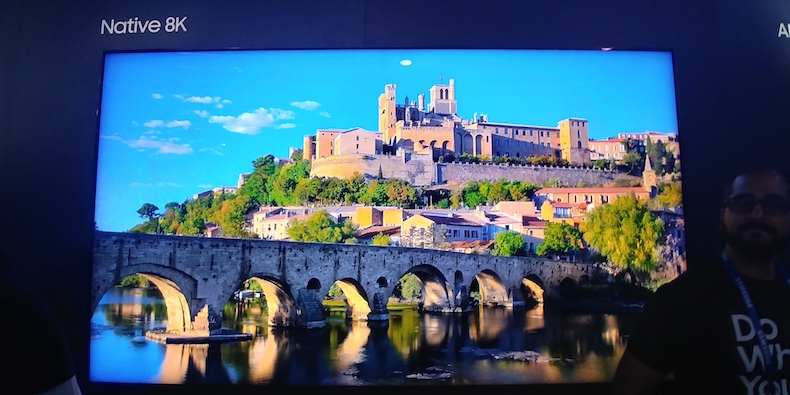
What we’ll also see this year is Samsung’s ‘smart' audio processing mode, which aims to enhance sound depending on content type by identifying the content’s metadata and continually analyzing and rendering the sound signal accordingly.
For example, it will identify a silence in the signal and, knowing something is about to come, try to normalize dynamic range and enhance important details when it comes. Our demo involved a short clip of an American football game, and the mode seemed to boost the atmospheric stadium noise while keeping the commentators clear above it.
8K AI QLED
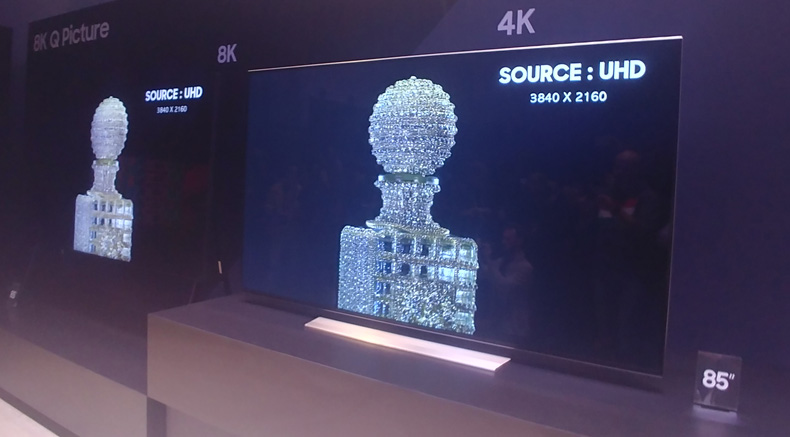
Samsung could also be among the first brands to market with an 8K TV. That’s 7680 x 4320 pixels. Do we need them all? Not really; there isn’t any 8K content.
But, Samsung says its 8K TVs will have an intelligent upscaling algorithm that can upscale 4K, Full HD and even SD content to “quality nearly the equivalent of 8K resolution”, improving detail and depth while reducing noise and jag.
Unlike conventional sets that use filters for smoothing, and detail enhancement and restoration processing for greater perceived detail, Samsung’s 8K AI upscaler technology is based on ‘machine learning’ and can cleverly learn (and store in its database) what processing tools to use depending on the content type.
According to a Samsung explainer, the technology “compares low and high-quality versions of the same content to learn the technological differences between the two and form a vast database. It analyzes millions of pieces of video content and finds a correlation. Based on its analysis, it can select the optimum filters that support brightness, the level of blackness, spread and other errors from all inputs, and transform low-definition content to close to 8K high definition.”
Samsung claims content can be identified in real-time so picture quality can be enhanced immediately.
While the limited 8K animation displayed at Samsung’s CES event certainly set the benchmark in terms of detail, the (equally limited) upscaled Full HD and 4K pictures looked quite remarkable. After all, it was some time before even 4K sets could pass off SD convincingly.
So when will we see this tech become a reality? Samsung plans to apply AI technology to its 8K QLED TVs, which are due to launch in Korea and the US in the second half of 2018.
MicroLED
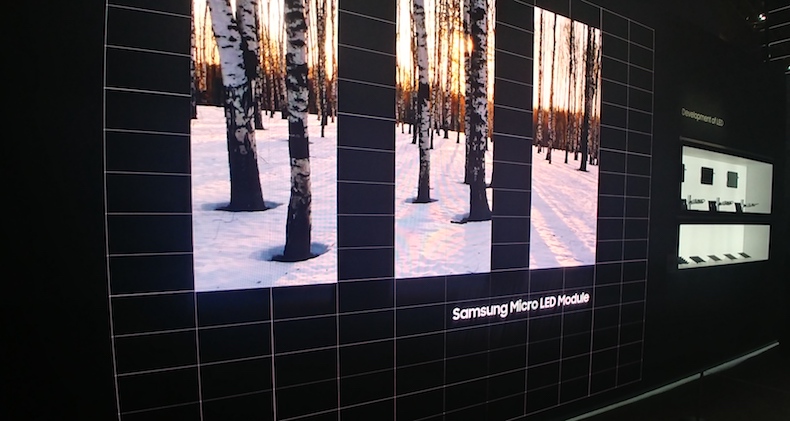
Perhaps the most interesting thing on Samsung’s roadmap is its venture into MicroLED, which is a self-emitting display (like OLED), comprised of quantum dots atop self-emissive diodes, with micro pixels and micro (less than 1mm) pixel spacing.
It marks the first time Samsung has moved away from LCD and – who knows! – could turn out to be the closest rival to OLED. Samsung says the technology can reach a potential 1,000,000 nits of brightness - which of course is a retina-destroying amount, but does imply the technology’s capability.
MicroLED will be introduced in (but not limited to) what turned out to be the only concrete Samsung TV announced this CES: The Wall.
At 146 inches, The Wall (an absolute beast, by the way) is modular, meaning it has a flexible block structure that can display any size and aspect ratio. And while we can’t see it as the centerpiece in many living rooms, it is coming to the market in (probably) 2019.
What else?
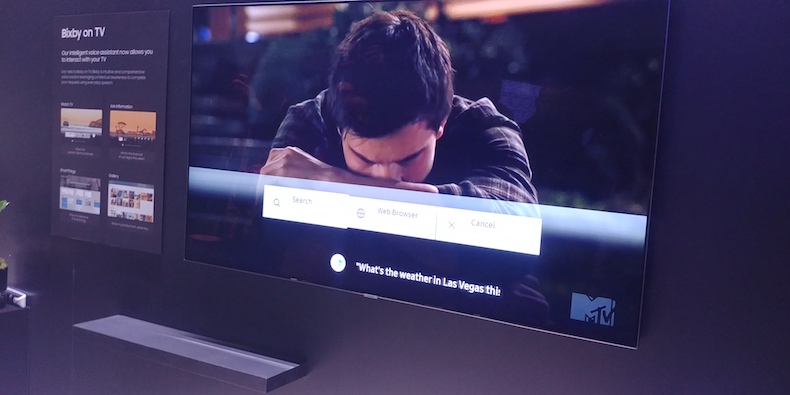
As Samsung is one of the three founding members of the HDR10+ Alliance (alongside Panasonic and 20th Century Fox), it’s no surprise that the Dolby Vision-rivaling HDR10+ format will also be a feature of its 2018 TV line-up.
They will also pile its TV apps under its SmartThings umbrella, grant TV set-up tools to a smartphone app, and feature a Universal Guide – an advanced EPG that automatically recommends TV programs and content according to a user’s preferences.
The next generation of Samsung TVs could be powered more efficiently, too. According to Samsung, the One Connect box will be around twice the size as the one supplied with 2017’s models – but that's because it’s taken on an additional job: powering the screen.
While last year’s models required a cable to the screen and another to the One Connect box, only the latter needs powering this time. It sends power and the AV signal using an umbilical cable that’s just as impressively thin as on last year's box.
MORE:
Stars of CES 2018: the best audio products of CES
CES 2018: New Samsung TVs feature 8K QLED, MicroLED, Bixby voice control, HDR10+
Becky is the managing editor of What Hi-Fi? and, since her recent move to Melbourne, also the editor of the brand's sister magazines Down Under – Australian Hi-Fi and Audio Esoterica. During her 11+ years in the hi-fi industry, she has reviewed all manner of audio gear, from budget amplifiers to high-end speakers, and particularly specialises in headphones and head-fi devices. In her spare time, Becky can often be found running, watching Liverpool FC and horror movies, and hunting for gluten-free cake.

